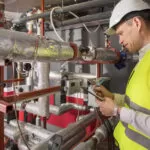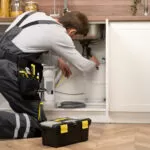As a responsible building owner in the expansive state of Texas, ensuring the safety of your property’s electrical systems is paramount. One critical aspect of electrical safety that demands attention is short circuit calculations. In this article, we’ll delve into the importance of short circuit calculations, understanding the risks, and the proactive measures Texas building owners can take to safeguard their properties and occupants.
Table of Contents
Understanding Short Circuit Calculations:
Short circuit calculations are a fundamental part of assessing and managing electrical safety within a building. A short circuit occurs when an unintended connection is established between two points in an electrical circuit, causing an abnormal flow of current. Short circuit calculations involve determining the magnitude of the current that would flow in the event of a short circuit, helping building owners assess the potential risks and implement necessary safety measures.

The Significance of Short Circuit Calculations:
In the dynamic environment of Texas, where weather conditions can be unpredictable, and buildings vary in size and complexity, understanding short circuit calculations is crucial. These calculations provide valuable insights into the potential impact of a short circuit on the electrical infrastructure, equipment, and the overall safety of the building.
Short circuit calculations help building owners identify potential hazards, such as overloaded circuits, faulty wiring, or equipment malfunctions, that could lead to a short circuit. By quantifying the magnitude of the current that could flow during a short circuit, owners can make informed decisions about protective devices, equipment ratings, and overall electrical system design.
Ensuring Equipment and Personnel Safety:
One of the primary reasons for conducting short circuit calculations is to ensure the safety of both electrical equipment and personnel within the building. In the event of a short circuit, the sudden surge of current can lead to equipment damage, fires, and pose a significant risk to anyone in close proximity.
Short circuit calculations aid in determining the appropriate rating for protective devices such as circuit breakers and fuses. By accurately assessing the potential short circuit current, building owners can select protective devices that respond swiftly to isolate the fault, minimizing the risk of damage and enhancing overall safety.
Complying with Electrical Codes and Standards:
Texas, like any other state, has specific electrical codes and standards that mandate the safe design and installation of electrical systems. Short circuit calculations are a key component of compliance with these regulations. Building owners must ensure that their electrical systems meet or exceed the standards set by the National Electrical Code (NEC) and local authorities.
By conducting short circuit calculations, building owners demonstrate a commitment to adherence with electrical codes, contributing to the overall safety and reliability of their properties. Compliance not only reduces the risk of electrical incidents but also ensures a smooth inspection process when required by regulatory authorities.
The Process of Short Circuit Calculations:
Short circuit calculations involve a detailed analysis of the electrical system, considering factors such as the impedance of transformers, cables, and other components. The calculations aim to determine the maximum potential current that could flow in the event of a short circuit at various points within the system.
Building owners typically engage qualified electrical engineers or professionals to perform these calculations. These experts use specialized software and industry-standard formulas to assess the impedance of the system components and calculate the potential short circuit current. The results of these calculations guide decisions about equipment ratings, protective devices, and overall system design.
Mitigating Risks through Protective Devices:
Short circuit calculations play a pivotal role in selecting and setting protective devices within the electrical system. Protective devices, such as circuit breakers and fuses, are essential for interrupting the flow of current during a short circuit, preventing extensive damage and minimizing downtime.
The results of short circuit calculations help determine the appropriate ratings and settings for these protective devices. Building owners can tailor their protective measures to the specific characteristics of their electrical system, ensuring a rapid response to short circuit events and enhancing the overall resilience of the system.
Investing in Preventive Maintenance:
Beyond initial short circuit calculations, building owners are encouraged to invest in ongoing preventive maintenance of their electrical systems. Regular inspections, testing, and maintenance activities help identify potential issues before they escalate into serious problems. This proactive approach contributes to the longevity and reliability of the electrical infrastructure.
In the unpredictable climate of Texas, where storms and weather-related events can impact electrical systems, preventive maintenance becomes even more critical. By addressing potential vulnerabilities and conducting periodic reviews of short circuit calculations, building owners can fortify their properties against unforeseen electrical challenges.
Conclusion:
In conclusion, for building owners in Texas, understanding and conducting short circuit calculations is a proactive step towards ensuring the safety and reliability of their electrical systems. By grasping the significance of these calculations, addressing potential risks, and complying with electrical codes, owners can create a secure environment for both their properties and occupants.
Short circuit calculations go beyond a regulatory requirement; they are a strategic investment in the resilience and longevity of the electrical infrastructure. Collaborating with qualified professionals in Electrical Engineering, implementing protective devices, and embracing preventive maintenance practices collectively contribute to a robust electrical system that can weather the dynamic conditions of the Lone Star State.




